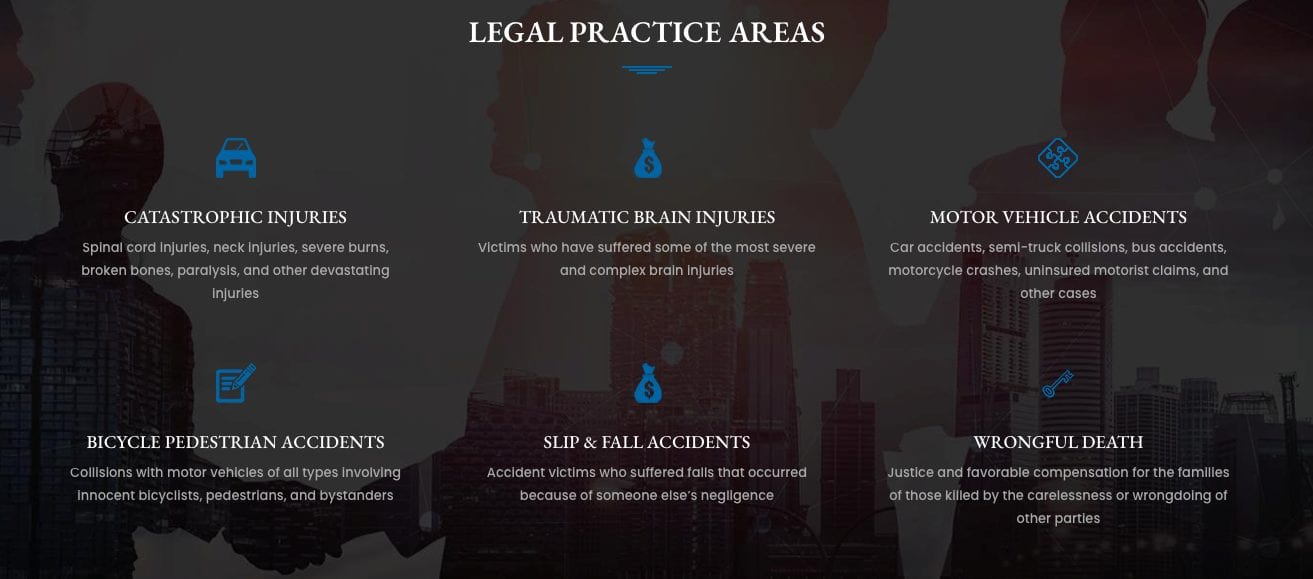Written by Market My Market’s content team, with contributions from Lauren Dominguez, Ryan Klein, Gina Ritch, Amanda Guglietta, Jordan Kimmel, Tyler McNulty, Jessica Unkel, and Brandi Nicklaus
As with most aspects of running a business, your website requires regular maintenance and modification to continue producing maximum results. An effective website is the virtual and public embodiment of your firm and will be crucial in your business’s success. Whether you sell products or provide a service, your website aims to accomplish one thing: growing your client base. One of the best ways to ensure the longevity of your site is to consistently post fresh content while actively investing in search engine optimization.
Contributed by Lauren Dominguez, Content Lead
We cannot stress enough how important it is to keep your website up to date. These days, your internet presence is usually the first impression of your business potential clients receive. If your website hasn’t been updated in months, what message do you think you are sending to your potential clients? When I visit a neglected website, I wonder if the company cares about their business or if they’re still in business.
Other than diminishing your credibility, having an outdated website can also:
- Weaken your ability to show up in search engines. Search engines like Google prioritize newer content, meaning if you haven’t updated your website in a while, your competitors will rank above you. How often do you look at the second page of Google results? Not often? Well, neither do your clients. Don’t let your competition take your leads just because they ranked higher than you.
- Reduce your website’s loading speed. Old themes and outdated technology can cause your website to load at a snail’s pace. If you aren’t keeping up with the lightning-fast changes in technology, you could be losing potential clients that aren’t willing to wait around for your website to load.
- Prevent clients from coming back. If you aren’t updating the content on your website, clients won’t have much reason to return to it. Stay on their mind by creating bookmark-worthy content that will keep them coming back for more.
- Make your competition look better. Does your competition have a beautiful, updated website that is consistently revised for the latest trends and news? If so, your competition will be much more appealing to your clientele because they will appear relevant, credible, and passionate about what they do.
- Put your users’ personal and financial information at risk. Security should always be a top priority for businesses. Keeping your website up to date on the latest security measures can prevent your website from falling prey to hackers that could steal your clients’ personal information and tarnish their trust in your company forever.
It’s easy to let updating your website fall to the bottom of your to-do list, but allowing your website to get stale can prevent it from being seen by thousands of potential clients. Protect your company’s reputation and keep the traffic rolling in by prioritizing web updates.
Contributed by Brandi Nicklaus, Content Specialist
It’s the age-old question when it comes to blogging: “Should I write news stories or evergreen blog topics?” A successful blog should include both current events and evergreen blogs. A good rule of thumb is to write 80% evergreen content and 20% current event topics, but it can vary depending on your clients’ preferences. Let’s discuss both types of content and why you should incorporate them into your blogging strategy.
Using Evergreen Topics for Blogging
Evergreen content is always useful and doesn’t go out of date. It centers around topics that will always be relevant to readers. When creating content for a law firm, some examples of evergreen content topics include:
- What to do after a car crash?
- Steps to take after receiving a traffic ticket
- Do I need an attorney?
When writing these topics, keep the format easy to follow. Using H2 and H3 tags will guide the reader through your blog, making it easier for them to digest the information.
People will always search for evergreen blog topics. As long as the post is well optimized and showcases your expertise, people will continue to find it. However, it is essential to revisit evergreen content periodically and update the post as the information it presents changes. Even your most successful blogs will eventually require revisions. When you update your content, don’t forget to share via social media.
If you have difficulty determining which evergreen content you should post, conduct keyword research to see which keywords are gaining the most traction. You can also use Google Keyword Planner to discover more evergreen topics you can write.
While searching for keywords is a great way to develop evergreen content, ensure you analyze that it is not on a declining trend or seasonal. For example, “Staying Safe on Roads During the Holidays” will likely only receive traction between late October to early January. Google Trends is an excellent way to see how a topic is trending.
Using Current Events to Drive News Stories
If you’ve been blogging for a long time, it can be challenging to develop new and relevant topics. One effective way to develop strong topics is turning to current events. More people are getting their news online, and tying your blogs to the latest news headlines brings relevance and importance to your message, attracting new readers.
There are likely to be countless stories each week relating to criminal defense, personal injury, or new legislation topics. Use these stories as the basis for your blogs. Once you summarize the article, answer questions a reader might have regarding the topic, such as criminal penalties, filing an injury claim, or how a lawyer can help.
Finding news-related topics is easy. Set up a Google Alert on a topic or event, and Google will send you an email when news relating to your keywords turns up. Review these posts and determine which ones will make a good topic for your blog. You can also look at local or state headlines to find a relevant article. Do not be afraid to look at case studies, either.
One thing you must remember about writing current events is that they will be outdated rather quickly. If you see a news article you want to blog about, write the post that same day and publish it to your website. At most, you have 24 hours of the news reporting cycle to get the most tie-in.
Contributed by Tyler McNulty, Content Specialist
Creating repurposed content has a number of advantages, including increased SEO effectiveness and more reach and visibility, which will ultimately result in more qualified leads. Plus, you save time and create consistency across all platforms, allowing you to attract and engage your audience.
If it’s done properly, repurposing content can actually increase brand awareness. Some companies think they need to produce new content continuously for months on end. However, when it comes down to it, refreshing and rethinking the content you have and getting into the hands of as many people as possible can be as effective.
Remember, you want to repurpose content that has performed exceptionally well. Review your analytics to determine which posts have achieved the greatest reach and engagement. This is a clear indication that people want the information you’re offering. Then, you can repurpose it into different formats after you’ve identified the content that yields the best results. Below are a few ideas to get you started:
- Create a podcast out of a blog post
- Produce case studies with internal data
- Record video content based on blog topics
- Gather content for an ebook or guide
- Put together a Powerpoint presentation for sales
- Incorporate testimonials into social media content
- Write FAQs out of the existing content
- Provide updated information on old blogs and pages
- Use statistics to create engaging infographics
Your blog content always has a specific target audience, information, and intent in mind, all of which can shift as time goes on. Repurposing can be helpful in these situations. By repurposing your content, you can potentially reach a new audience, improve your website’s authority, and tailor your message to the present environment. The same story can result in dozens of different pieces of content. Whether your repurposing efforts are successful depends largely on your ability to focus on adding value to each audience and rethinking the way they use specific communication formats to consume information.
Contributed by Amanda Guglietta, Content Specialist
After you’ve developed a routine for posting fresh content, you’ll want to make sure your website is eye-catching and navigable. Web design trends are always changing to keep up with users’ preferences for how they interact with digital content. Updating your look will create a strong impression for new and existing clients, and shows that you are dedicated to providing a quality experience that will carry over to doing business with them.
When evaluating your website, focus on the user experience first and foremost. The following UX components should not be overlooked:
Maintaining a Uniform Aesthetic
The theme of your website should mirror your firm’s overall branding. Your color scheme, font, and logo should look the same on your website as it does on any printed materials you may distribute. Uniformity across digital and physical materials will ensure future and existing clients that they’ve come to the right place.
Utilize Simple Layouts
It may be wise to periodically reevaluate the layout of your site. Users these days prefer clean layouts that make it easy to find the information they need. An attorney practicing personal injury law, for example, might want to highlight their top 3-6 types of cases on the home page. Linking to individual practice area pages from the home page will make it easy for clients to choose the legal issue that most closely aligns with their own and learn more about the relevant services you provide.
Your firm’s pages should also be easy to find via the home page menu bar.
Ensure Your Site is Accessible to All
One thing you may not have considered when first building your website is accessibility. By law, websites must be accessible to all users. Ensuring that anyone with internet access can use your site improves the overall user experience and broadens your pool of potential clients. When updating your site, work with an agency committed to creating sites that people with disabilities can navigate.
Contributed by Lauren Dominguez, Content Lead
A content management system (CMS), in basic terms, is a tool that helps you construct a website without needing to develop the code from scratch. With the help of this kind of software—some of the most popular of which include WordPress, Joomla, Drupal, and Squarespace—you can create, manage, and modify content without the need for specialized technical knowledge. Using a CMS to power your site may be one of the best investments you make for your digital presence and your business. Likewise, a CMS is one of the best tools for keeping your website relevant if used correctly.
Especially useful for businesses without limited web-dev resources, advanced CMS platforms offer tremendous freedom to customize content. You can easily swap sections in and out to keep up with the times, and if you have a decent understanding of the system, you can make simple changes to the entire visual layout of your site. Likewise, with an increasing number of web visits coming from mobile devices, ensuring your site is responsive to different screen sizes is essential. Many CMS platforms offer mobile responsiveness.
Once you decide to use a CMS platform, you may wonder which to utilize for your business. With a wide variety of options, it’s easy to feel overwhelmed. It’s important, first, to understand what you should look for in a good CMS. Some of the most important qualities to target include ease of use, design options, data portability, extensions, support options, and cost. Here are three of the best platforms for keeping your website relevant:
WordPress
If there’s one CMS most everyone has heard of, it’s WordPress. Launched in 2003, WordPress has become a significant part of the internet and the way many businesses are built online. WordPress isn’t just the most popular option, but it may be the best. You not only have tools to create a feature-packed website with a robust blogging option to boot, but you also have the ability to install a mixture of pre-made and third-party themes to personalize your website. WordPress caters to all sorts of industries, from retail to hospitality.
SquareSpace
SquareSpace is another mega-popular CMS platform. SquareSpace differs from WordPress because it isn’t open-source, meaning you can’t download the software and install it on your own server. Instead, SquareSpace is an integrated website builder, blogging platform, and hosting service that allows you to build a website from scratch with ease. SquareSpace is one of the most user-friendly options on the market, which comes in handy if you don’t have any other web development experience or if you need to get a site running in a short amount of time.
Joomla
When people debate the best CMS software, Joomla is one of the names that come up most often alongside WordPress. Designed to be the middle ground in the open-source CMS marketplace, Joomla combines the versatility of sites like Drupal with the user-friendliness of WordPress. With its built-in functionality, you can manage hundreds of users, build pages in multiple languages, and create custom post types that use different templates or themes.
Contributed by Jordan Kimmel, Content Specialist
The landscape of modern marketing has changed dramatically in the last few years. In 2016, one-third of mobile phone users accessed the internet primarily through their mobile devices. The ability to constantly access the internet allowed businesses to communicate with potential clients in unique and innovative ways. However, as of 2021, over 84% of Americans accessed the internet through their mobile phones. More than ever, having a multi-device website is a necessary aspect of impactful marketing.
Mobile-friendly websites are a vital part of any online presence. By introducing a way to access your website on the go, potential clients have an easier way to learn more about your business on their own schedule. Websites that are only optimized for use on a PC or a Mac lose the ability to accommodate clients, and a user-friendly online experience has a higher chance of retaining business in a competitive mobile-forward market.
Introducing a website that is optimized for use on multiple devices can have a significant impact on your marketing budget. Multi-device websites can provide you with more robust reporting on user habits and how they navigate your page. This information can help you decide where to focus your advertising efforts, what area of your business to focus on, or how you can improve the overall experience of your clients.
One of the most notable impacts of a multi-device website is how it can help you access a wider user base. Having a website that is accessible on different devices introduces a new set of clients to your pipeline that may not otherwise have seen it. This approach can improve the effectiveness of your website on new users and inform the next steps that you take in your marketing journey.
Reports indicate that mobile traffic will increase by 25% over the next few years. The best way to take advantage of this trend and stay ahead of the competition is to ensure that your website is compatible and user-friendly on multiple devices.
Contributed by Jessica Unkel, Content Specialist
When creating content for your website, one important aspect to focus on is its “shareability.” In today’s digital environment of social media and search engine optimization (SEO), creating content that visitors can easily share with their friends is a simple way to get more views on your content and, in turn, more potential customers.
Shareability is the potential of a particular piece of content to be passed along or shared by a reader. That usually involves an individual reading content on your website, liking what they read, and sharing that same content on their social media profile so their friends and family can read it too.
To make your website content more shareable, consider adding these simple techniques:
- Include captivating titles & headers: Entice readers to view your content with compelling titles that pique their curiosity and headers that make your content easily scannable.
- Incorporate images and videos: Content that includes images, videos, and other forms of media is much more likely to be shared than content without or with fewer images.
- Add share buttons for social media: Every blog post or article should include a share button for readers to efficiently distribute your content on their own social media profiles, via email, text, or instant messenger.
- Integrate “like” or “follow” buttons: Allow online readers to click the thumbs up button quickly and “like” or “follow” your business page on Facebook, Twitter, Instagram, and other social platforms without ever leaving your site. A good location for a “like” button is on the sidebar of your website below your email list signup.
- Improve your commenting system: Allowing readers to comment on your content is nothing new. However, not all sites allow readers to share their comments on social media. Giving readers the option to share their comments on their own social media profiles leads to more shares, higher views, and more opportunities to convert readers into customers.
By integrating shareable features into your website content, you increase the likelihood of your ideal customers finding your content and purchasing your products or services—thus increasing your bottom line.
Contributed by Gina Ritch, Content Specialist
In most cases, your website and its content are only as good as the SEO best practices you follow. Poor SEO, or a complete absence of SEO, is one of the biggest reasons consumers aren’t naturally finding your website. You don’t necessarily have to be an SEO expert or employ the services of an SEO agency or consultant to get your website up to date for Google, but having the basics in place will go a long way.
Google’s algorithm is complicated to the point where the engineers tasked with its creation likely don’t know all the quirks of the monster they’ve created. Nevertheless, having an SEO plan in place for your website is important because:
- Google generally favors websites that are in more observance of basic SEO with higher visibility of search queries.
- Many SEO updates suggested by Google and SEO experts contribute to a better user experience on your website, resulting in higher conversion rates and longer times spent on your website. These updates include UX modifications, site speed updates, and easier navigation throughout your website.
- The higher level you can apply SEO to your website, the more likely you will start to reach competitive positioning for the main keywords your website and/or your business are working to achieve.
If there’s one other article I can reference from MMM that dives into the most important SEO factors you can apply to your website immediately, I would recommend the following page.
Contributed by Ryan Klein, Managing Partner
For businesses to grow in today’s climate, it’s crucial for marketers to think about their content and strategies on a global scale. This approach, which has been reinforced by some of the most successful global companies, is a way to capture new markets worldwide, catch new customers’ attention, and create a place where they’ll want to make their purchases and spend their time. This tactic is called “content localization.”
The development of the internet has opened doors to new markets across the world. Yet, marketers can miss out on significant opportunities if their business doesn’t pay proper attention to these new customers’ preferences and culture. Content localization involves taking content that you’ve produced for your primary market and adapting it for your new target market. This doesn’t just mean speaking the language of your target audience but also understanding their unique interests. This may be achieved in several different ways, depending on your goals:
- Translation: One of the simplest and most basic forms of content localization involves encoding the same information from one language to another.
- Localization: Beyond translation, localization is a way of adapting the original content to a new target audience. Localization requires more work and finesse than just translation.
- Transcreation: This top-level process involves rewriting content in another language and changing the message itself if needed to adapt to cultural differences.
Localization is the process of addressing and integrating cultural, linguistic, and other contextual components to best adapt the text to a local market. For example, simply translating the phrase “What is your name?” from English to Italian results in “Come ti chiami?” which literally means “How are you called?” This is translation but not content localization because it doesn’t ensure the language is formatted and adapted for a specific market and aligns with the brand’s overall content, product, and flow.
Localization may involve ensuring your images are accurate based on the landscape, the language is appropriately translated, the cultural trends are kept in mind, and the visual components are culturally sensitive. Nowadays, your product and content must sound authentic within the locales you’re targeting. For your business to stay relevant here and across the world, localization is crucial to implement because it creates a connection that enhances the value of your product to its global consumers.
Contributed by Jordan Kimmel, Content Specialist
Your website is an organic project that will undergo countless changes as you grow your business. Without a functional presentation to attract and retain visitors, all the resources you spend on creating engaging content, developing targeted ad campaigns, link-building, and other optimization efforts will fail to produce maximum results. When you’re ready to prioritize updating your site, we can help you decide what needs the most improvement. Click here to schedule a free consultation with our web design experts.





